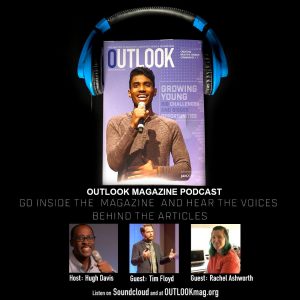Leadership guru Max De Pree once said, “the first responsibility of a leader is to define reality.”1 We have to know what we are up against before we can make plans for action. In an attempt to define our present reality in the church, let’s talk honestly for a few lines.
Defining Reality
In 1965, the Seventh-day Adventist Church began studying the issue of why people leave the church. Since that study began, there have been over 37 million Seventh-day Adventist members worldwide. However, over 15 million of them have left the church in that time.2
When asked why they left the church, the majority of the responses did not necessarily indicate a lack of belief or specific theological disagreement; rather their reasons pointed toward a relationship breakdown evident in a variety of behaviors, actions or perceptions.
Additionally, over 63 percent of those who have left the church were young adults when they left. That means that in every generation (at least since we started studying this in 1965), there has been a mass exodus due to a relational breakdown in the late teen and young adult age. As a church, we have not been supporting our younger generations well enough, so they leave.
This is unacceptable. We now have over 55 years’ worth of data indicating that the younger generations are leaving in startling numbers, and we have invested a lot of resources understanding the reasons why they have left. We have mountains of research on this single issue within Adventism, and yet we have seen no change in the problem.
This is the reality we face. The question is, what are we going to do about it? Will we continue business as usual, or invest in changing the culture that causes these losses?
Growing Young
Beginning in 2016, a small group of Adventist pastors, teachers, conference and union leaders began studying the book Growing Young by Kara Powell in an effort to find a solution for our own challenges.3 Kara’s team had been looking at the same issue as the Adventist Church’s Nurture and Retention study, except within Christianity as a whole. They decided to stop focusing on the problem, and start looking at what they call “Bright Spots” in ministry. These are congregations that are effectively loving and serving young people already.
These congregations are engaging young people ages 15-29, and are growing spiritually, emotionally, missionally and sometimes also numerically. The researchers identified six “core commitments” present in every one of the churches studied:
 Unlock keychain leadership. Instead of centralizing authority, empower others, especially young people.
Unlock keychain leadership. Instead of centralizing authority, empower others, especially young people.- Empathize with today’s young people. Instead of judging or criticizing, step into the shoes of this generation.
- Take Jesus’ message seriously. Instead of asserting formulaic gospel claims, welcome young people into a Jesus-centered way of life.
- Fuel a warm community. Instead of focusing on cool worship or programs, aim for warm peer and intergenerational friendships.
- Prioritize young people (and families) everywhere. Instead of giving lip service to how much young people matter, look for creative ways to tangibly support, resource, and involve all of them in all facets of your congregation.
- Be the best neighbors. Instead of condemning the world outside your walls, enable young people to neighbor well locally and globally.4
Twelve others and myself joined a cohort for the purpose of becoming certified trainers and speakers for the NAD in Growing Young Adventists.5 Once we became certified trainers and speakers, our job was to become a mentor and resource coordinator to local pastors and their churches who wanted to improve their generational bonds.
Church culture change takes intentionality and a lot of hard work, but change is possible, and the two congregations who have embraced the journey so far have already begun to see fruit from their labors!
Additionally, Growing Young Adventist Summits were held in November 2018 in Kansas City and in October 2019 in Saint Cloud, Minnesota. These Growing Young Adventist Summits were a learning journey for local churches and leaders from across the Mid-America Union where leaders gathered to learn practical skills to improve intergenerational ministry in their local churches. Attendees learned practical ways of helping to build faith communities that will not only survive, but thrive in the years ahead.
Through the leadership of MAUC Church Ministries director Roger Wade, we are giving congregations practical knowledge and skills to help make change possible. We endeavor to not only stop younger generations from leaving the church, but to make local churches in the Mid-America Union places where every member can flourish and have a tremendous impact on the world around them.
Hope for the Future
One of the most powerful takeaways I gained from the Barna collaboration in 2013 was a statement author and researcher David Kinnaman made to the North American Division leadership: “You have to come to the point where you love your young people more than your traditions.”6 Until we are willing to make our young people a priority (with time, energy, budgets and authority) we will not change. Our churches will continue to decline, and within 15-20 years, we will be a shadow of what we once were.
Or, we could take the steps to change our church culture now and salvage what remains. When we put the teachings of Jesus (not traditions) at the center of our church culture, we begin to empathize with all members. This drives a warmer community, where we prioritize our young people, and we mentor them in leadership opportunities. As a result of that we become better neighbors to our communities, and we grow … but we are Growing Young.
Timothy Floyd is youth and young adult director for the Kansas-Nebraska Conference. Read his full report on Growing Young within the Mid-America Union Conference.
We dig deeper into church culture and creating healthy church communities in this month’s podcast with Pastor Tim Floyd and Rachel Ashworth. In the 2020 January issue of Outlook Rachel Ashworth shares the best way to create a health church community.
1. De Pree, Max. Leadership Is an Art. New York: Currency, 2004.
2. Trim, David. Nature & Retention. General Conference Annual Council 2017: Adventist Office of Archives, Statistics, and Research, 2017.
3. Powell, Kara Eckmann. Growing Young: Six Essential Strategies to Help Young People Discover and Love Your Church. Grand Rapids, MI: Baker Books, 2016. 19.
4. Growing Young, page 43.
5. For more information on Growing Young Adventists, please visit www.growingyoungadventists.org.
6. Barna Group. Seventh-day Adventist Church Young Adult Study. Silver Spring, MD: Seventh-day Adventist Church, 2013.










